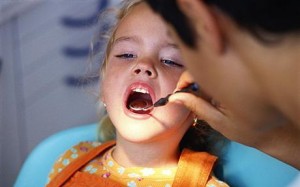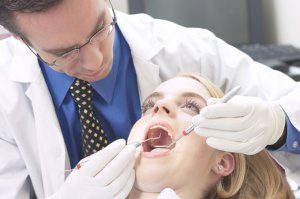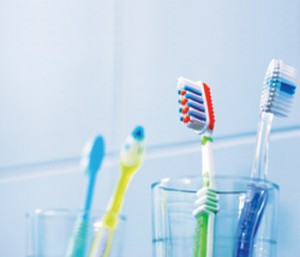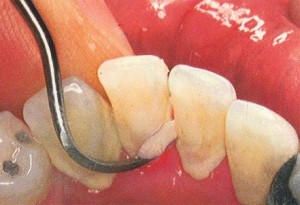First time visiting a dentist and feeling anxious about what he/she will be doing during your first appointment? This article will briefly outline the basic procedures normally done by the dental professional on your first visit to the dental office.
What to expect from your first dental visit
A dentist’s role is to offer advice and, if the advice is accepted, provide treatment. This advice can usually be classified as follows: diagnosis, prognosis, treatment options, and prevention of further disease.
Diagnosis is the recognition of a disease; prognosis of a condition is the estimate of what will happen in the future both with and without treatment; treatment options are based fundamentally on the first two, and the patient’s response to the initial treatment will be an important factor when planning subsequent care for prevention of further disease.
Before a dental examination is done, the dental professional will be asking certain information.
History taking
The following information is usually needed.
General information about yourself
- Name, address, telephone and fax numbers, and e-mail address – This information is essential to prevent confusion.
- Age, gender and occupation – Besides avoiding confusion, this information may have considerable bearing on the state of dental development and on the dental condition itself.
- Diet – Since diet plays a major role in dental cavities and can be of importance in tooth wear.
- Habits – Your tooth-cleaning habits and the toothpaste used, as well as other relevant habits, for example smoking, will be inquired.
- Willingness to meet fees and other expenses – Sometimes the ideal treatment plan will be too costly and an alternative might have to be sought. It is important to establish this at an early stage before too much time is spent on detailed planning by the dentist.
Information about the your general condition and health
Questions are usually asked about the following:
- History of heart or chest disease – To avoid any complications during dental treatment.
- Current (or recent) medication – The current or recent medication is relevant if it is likely to produce a degree of dry mouth.
- Allergies – To avoid any complications during dental treatment.
- Any difficulty in the arrest of bleeding after extraction or injury – As of above.
- Previous hospital admissions
- Other disease – One of the most important disease which affects patient management is diabetes.
- Pregnancy – The relevance of pregnancy is that some, particularly those with multiple pregnancies with morning sickness, are at risk of dental erosion, and also to avoid radiation.
- Contact with HIV or AIDS – To avoid risk of disease transmission.
The reason for dental attendance
This information is essential for setting treatment priorities.
Past dental history
This information indicates susceptibility to disease as well as attitudes towards dental care.
Family and social background
Where an inherited condition is suspected, clearly the distribution within the family is important. The same is true of social background.
Examination
- General appearance
- Factors which predispose to particularly hazardous cross-infection
- Extra-oral facial appearance – the jaw joint (TMJ) and lymph nodes are  checked for symmetry, and lips
- The mouth in general – Oral hygiene is relevant in both gum disease and cavities.
Examination of specific areas of the mouth
 The soft tissues
The soft tissues
A routine examination of the inner aspects of the lips, the tongue and all the lining tissues of the mouth should be made since certain early tumor change can be detected and early treatment can be life-saving.
The periodontal or gum tissues
A general assessment of the state of health of gum tissues is always necessary. This will include oral hygiene, the health and position of the gum tissues, the presence of gum pockets, the presence of tartar (calculus), and whether bleeding on probing and loose teeth are present.
Cavities experience past and present
A general impression can be gained of the extent of tooth decay and previous fillings.
Other conditions affecting the teeth
These include trauma, tooth wear, dental defects, missing teeth and incorrectly positioned teeth.
The general state of restorations
The condition of existing fillings is checked.
Occlusion
The way in which the teeth function against each other in movements of the lower jaw is checked.
Dentures
Presence and nature of dentures are noted to decide whether dentures are satisfactory or in need of replacement.
Detailed charts
- Periodontal charting – This may include plaque indices, probing depths, bleeding points, gum level and tooth mobility.
- Conservation charting – This will include cavities and existing fillings.
Special tests
A number of special tests may be required to supplement the information obtained from the history and examination.
- Radiographs or X-rays
- Vitality tests – To check whether the tooth concerned is alive
- Occlusal analysis – For design of partial dentures and fillings that can affect your normal bite
- Diet analysis
- Salivary analysis – Salivary flow rate is measured in those with high cavities incidence
Dental cleaning
Dental teeth cleaning or teeth scaling is the removal of plaque and tartar from the tooth surface, either with hand instruments or mechanically. Tooth scaling is usually completed first as far as initial therapy after a dental examination and local anesthesia is usually not necessary. The teeth are usually polished after scaling, preferably using a rubber cup and a prophylaxis paste. You can then appreciate the feeling of a clean mouth, which you must then maintain your dental hygiene.




